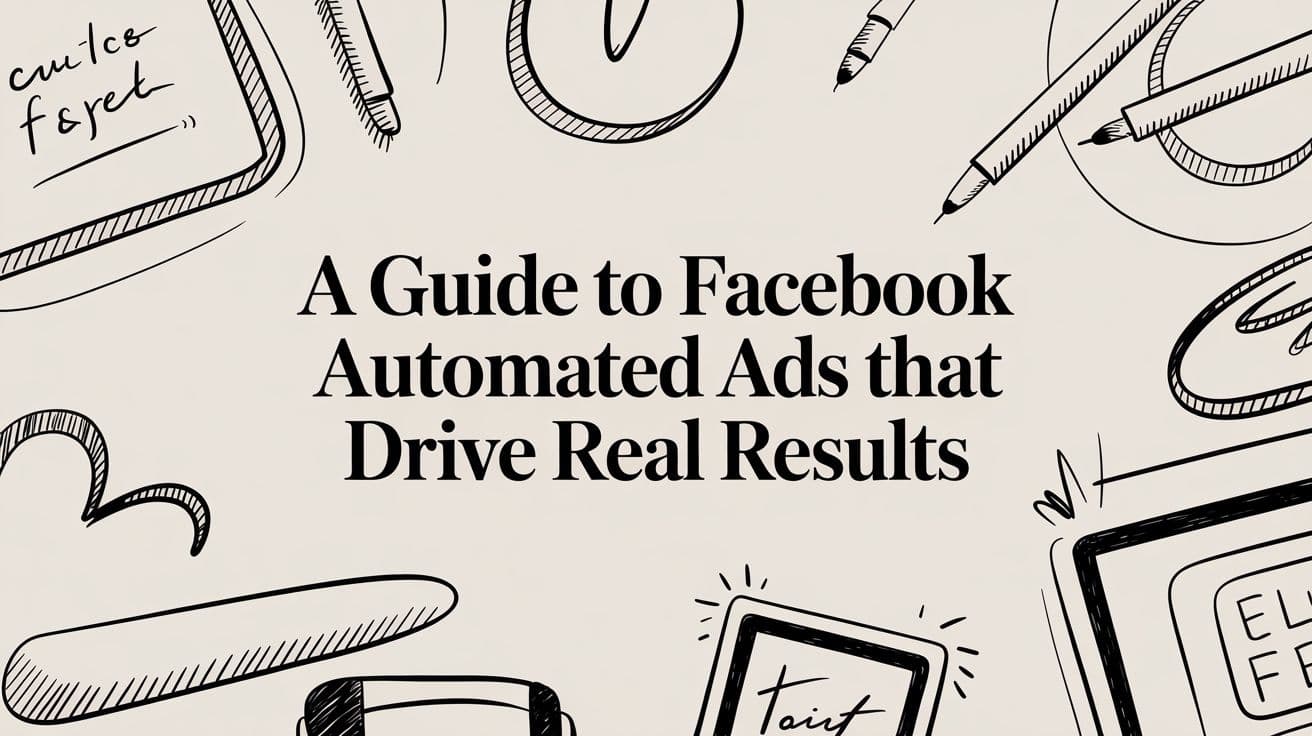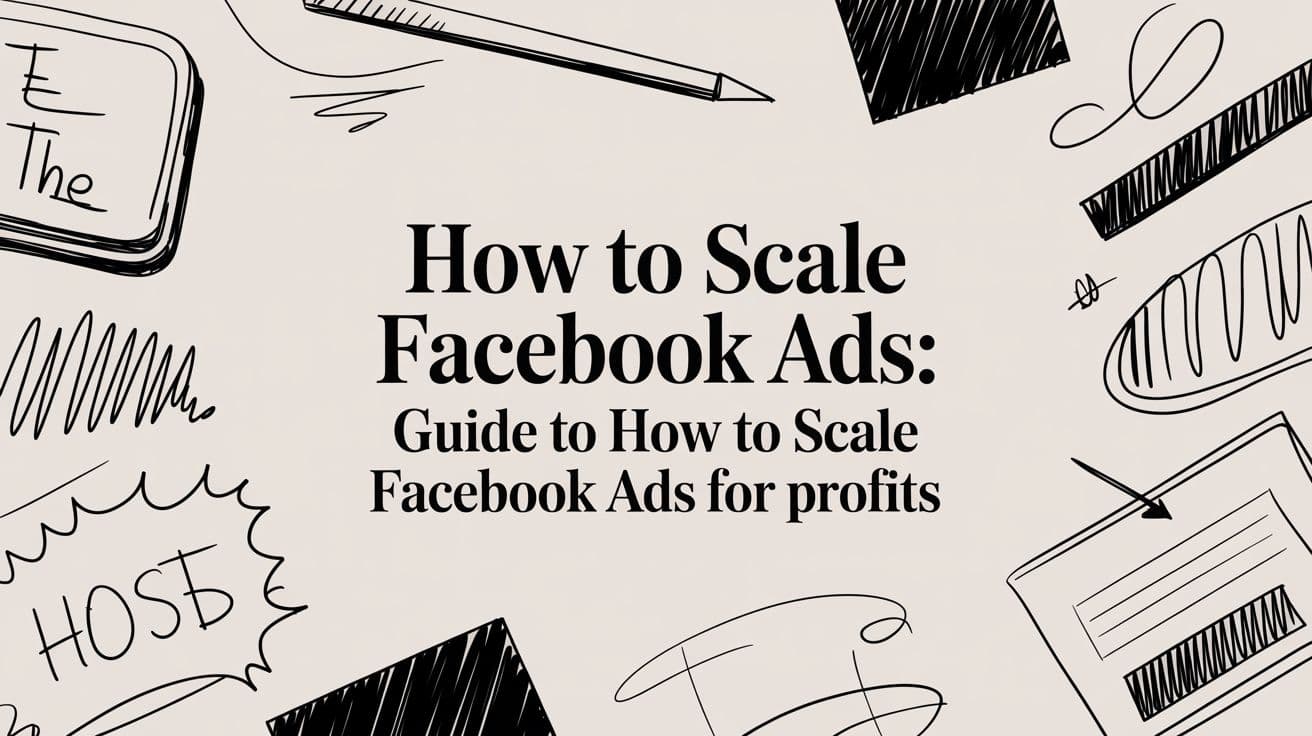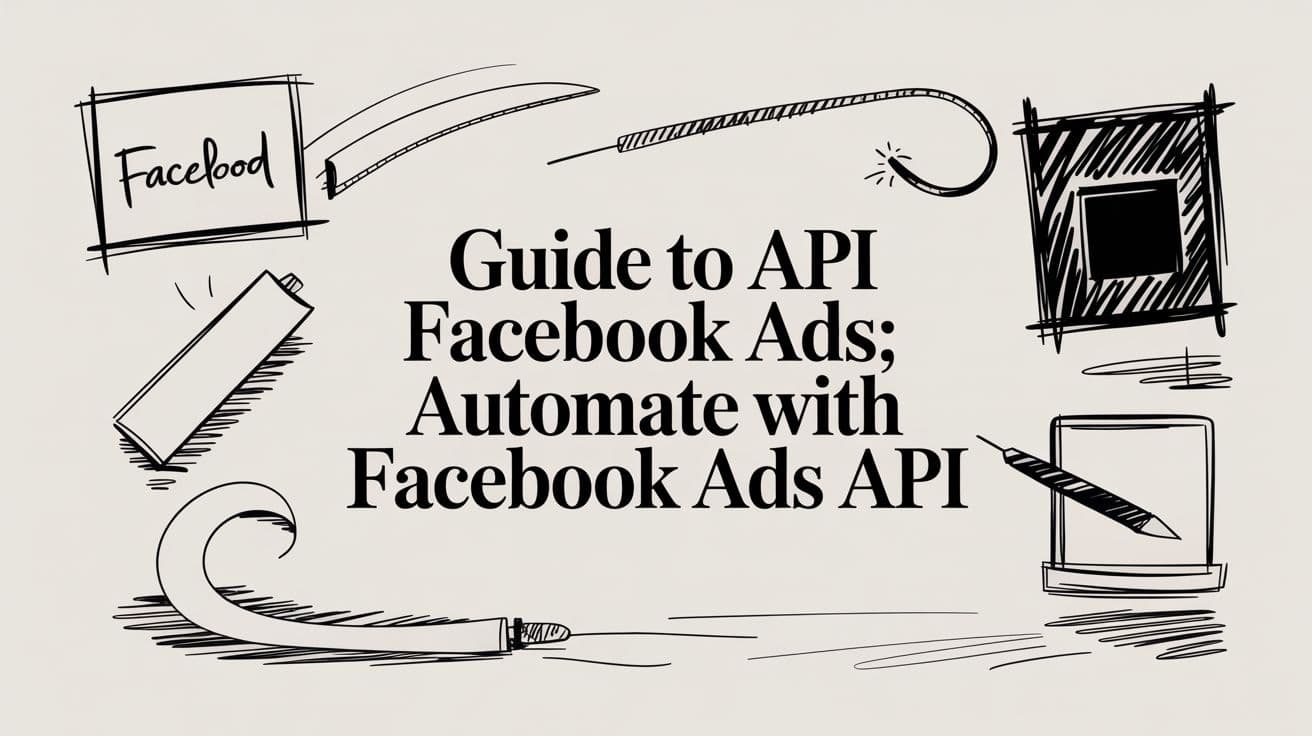Ultimate Guide to Creative Diversity for Facebook Ads

Everyone's talking about creative diversity in advertising, right? You hear about it all the time—how you need different visual concepts for your static and video ads. But there's a big piece missing from most of these conversations: message diversity. It’s not just about what people see; it’s about what they hear, too.
In this post, we're going to explore how you can combine visual and message diversity to find the right mix that works for your audience. We’ll break down the stages of awareness, dive into what really motivates people, and discuss how to structure your messaging using some tried-and-true frameworks. We’ll also look at the different types of ad formats—both static and video—and how you can use them to create a variety of engaging ads.
By the end of this post, you’ll have a clear idea of how to put together a diverse set of creative ads that resonate with your target audience. Whether you’re just starting out or looking to refine your existing strategy, this guide will give you the tools you need to get started.
Understanding the Stages of Awareness for Creative Diversity
When it comes to advertising, one of the most important things to understand is the different stages of awareness that your audience might be in. This concept is key to creating effective ads that speak directly to where your potential customers are in their journey.
Unaware to Most Aware
Let’s start at the top. There are people out there who are completely unaware. They don’t know about your product, and they might not even realize they have a problem that needs solving. These are the folks at the very top of your funnel.
As people move down the funnel, they become problem-aware. They know there’s an issue, but they might not know there’s a solution out there. Next, they become solution-aware—they know solutions exist, but they aren’t familiar with your specific product.
Then we have product-aware people. They know about your product and probably know about your competitors too. Finally, at the bottom, we have the most aware. These are the people who are just about ready to buy but haven’t pulled the trigger yet.
Bottom of Funnel Messaging
If you’re just starting out, it’s often a good idea to begin with bottom-of-funnel messaging. This is where you’re talking to people who are already aware of your product and are close to making a purchase decision. The goal here is to give them that final push.
This kind of messaging includes things like customer testimonials, social proof, and case studies. These elements help to build trust and show potential customers that others have had a positive experience with your product. Once you’ve nailed down your bottom-of-funnel messaging, you can start working your way up the funnel, creating content that speaks to people at different stages of awareness.
Universal Human Motivators in Advertising
Understanding what motivates people is another key aspect of creating effective ads. There are some universal human motivators that apply to just about everyone. When you tap into these motivators, you can create messages that really resonate with your audience.
Key Motivators
Here are some of the big ones:
Avoiding Effort: People love it when things are easy. If your product makes their life easier, that’s a big selling point.
Saving Time: Time is precious, and anything that helps save it is highly valued.
Avoiding Pain: This can be physical pain, but it can also be mental or emotional discomfort.
Increasing Comfort: Comfort is king. Whether it’s physical comfort or peace of mind, people are always looking for ways to increase it.
Improving Health: Health is a top priority for many people, so anything that promotes better health can be a strong motivator.
Enhancing Status: People care about how they’re perceived by others. If your product can help them look better, smarter, or more successful, that’s a huge draw.
Feeling Loved: We all want to feel connected and appreciated. Products that tap into this can create a strong emotional response.
Receiving Praise: Everyone likes to be recognized and praised. If your product can help people achieve something worthy of praise, that’s a big plus.
Applying Motivators to Your Product
The key is to think about how your product helps people achieve these things. Once you’ve identified which motivators apply to your product, you can start brainstorming different angles for your messaging. This will give you a variety of ideas to test and see what resonates most with your audience.
For example, if your product saves time, your messaging could focus on how much easier life will be with it. Or if your product improves health, you might highlight the specific health benefits it offers.
Messaging Frameworks for Creative Diversity
Now that you’ve got some ideas about what motivates your audience, it’s time to think about how to structure your messaging. There are several proven frameworks that can help you create a variety of messages that keep your ads fresh and engaging.
Popular Script Templates for Facebook Ads
Here are a few frameworks that are widely used in advertising:
Listicles: These are list-style articles or ads that break down information into easy-to-digest points. They’re popular because they’re quick to read and provide value upfront.
Problem-Agitate-Solution: This classic framework involves identifying a problem, agitating it by emphasizing the pain it causes, and then presenting your product as the solution.
Features-Advantages-Benefits: This approach involves listing a product’s features, explaining the advantages those features offer, and then tying those advantages to specific benefits for the user.
Before-After-Bridge: This framework shows the “before” state (the problem), the “after” state (how life is better with your product), and the “bridge” that connects the two (your product).
Educational Content: Providing useful information that educates your audience can be a great way to build trust and authority.
Unique Mechanism: If your product has something unique that sets it apart, this framework focuses on that unique feature or mechanism.
Founder Stories: People buy from people. Telling the story of how your product came to be, especially if it involves a personal journey or challenge, can create a strong connection with your audience.
Customer Testimonials: Real stories from real customers can be incredibly persuasive. Mashups of several testimonials can also be effective.
Founder Stories and Testimonials
Founder stories are particularly powerful because they’re authentic. If the founder of a company is good on camera, sharing the origin story can add a personal touch that resonates with viewers. Similarly, customer testimonials offer social proof, showing potential buyers that others have already benefited from the product.
These frameworks aren’t just about creating one-off messages; they can be used to develop an entire campaign with a consistent theme. By mixing and matching these frameworks, you can maintain creative diversity while ensuring that your messaging remains on point.
Visual Formats for Creative Diversity
Now that we’ve covered the messaging side of things, let’s talk about the visual formats you can use to bring your ads to life. Just like with messaging, there are many different ways to present your visuals, from simple static ads to more complex video formats.
Low-Lift Static Ad Formats

If you’re looking for something that’s quick and easy to produce, there are plenty of low-lift static ad formats that can still pack a punch. These might include:
Post-it Notes: A simple image of a handwritten note can be surprisingly effective, especially if the message is personal or urgent.
Reddit Screenshots: These can be used to show real conversations or comments that highlight your product’s benefits.
iMessage/Slack Screenshots: Similar to Reddit screenshots, these show real or staged conversations that showcase your product in action.
Minimalistic Text Ads: Ads with just a few words on a plain background can be very effective, especially if the message is strong.
These formats are low-cost and low-effort, but they work because they focus on the message itself. Sometimes, the simplest ads can be the most effective because they cut through the noise and get straight to the point.
High-Fidelity Static Ad Formats
On the other end of the spectrum, you have more polished, high-fidelity static ads. These might include:
Advertorials: These are ads that look like editorial content, blending in with the articles or content on a website.
Press Ads: Ads designed to look like part of a newspaper or magazine can lend a sense of authority and credibility.
These types of ads can be more expensive to produce, but they also tend to have a higher perceived value. They’re a good choice when you want to make a strong impression or reach an audience that values quality and sophistication.
Video Ad Formats
Video ads are where you can really get creative. There are so many different formats to choose from, depending on your budget and your audience. Here are a few options:
User-Generated Content (UGC): This is huge right now. UGC feels authentic because it’s created by real people, not polished by a marketing team.
AI-Generated Content: AI tools can help create quick, engaging content that feels personalized.
B-Roll: This is secondary footage that can be used to add context or background to your main content.
Podcast Style: Ads that mimic the format of a podcast can feel more relaxed and conversational.
Street Interviews: Man-on-the-street interviews can be a fun way to showcase real opinions about your product.
Green Screen Reactions: These can be used to create humorous or exaggerated reactions that grab attention.
Before-After Transformations: Showing a clear transformation can be very powerful, especially for products that promise visible results.
For higher-end video content, you might consider studio shoots or partnerships with celebrities or large influencers. These can give your brand a more polished and professional image, but they also require a bigger investment.
Finding the Winning Combination for Ads that Convert
With all these different messaging and visual options, how do you know where to start? The key is to test different combinations and see what resonates with your audience.
Analyzing Competitors
One of the best ways to get started is by looking at what your competitors are doing. What are their top-performing ads? What messages and formats are they using? This can give you valuable insights into what’s working in your industry.
You can also look at the comments on your competitors’ ads. What are people saying? Are there any recurring themes or pain points? This can help you understand what motivates your audience and what they care about most.
Understanding Audience Demographics
It’s also important to consider your audience’s demographics. For example, if your ideal customer profile (ICP) leans older, they might be spending more time on Facebook instead of Instagram. On the other hand, a younger audience might be more active on TikTok or Instagram Reels. Understanding where your audience spends their time can help you decide which platforms and formats to focus on.
For example, if you find that your competitors’ top concepts are performing well with image ads, and your audience skews older, you might want to start with similar image ads on Facebook. But don’t stop there—testing is crucial. What works for one brand might not work for another, so it’s important to try different combinations of message and format to see what resonates best with your specific audience.
Conclusion
Creative diversity is more than just a buzzword—it’s a strategy that can help you reach different segments of your audience in ways that are most likely to engage them. By understanding the stages of awareness, tapping into universal human motivators, applying proven messaging frameworks, and experimenting with various visual formats, you can create a diverse set of ads that speak directly to your customers’ needs and desires.
If you’re new to this or feel overwhelmed by the options, start small. Begin with a few key messages that align with the stages of awareness closest to making a purchase decision. Test these in different formats—both low-lift and high-fidelity—to see what works best. Use the insights you gain to refine your approach and gradually expand your creative efforts.
We’ve covered a lot of ground here, from understanding how to tailor your message to where your audience is in their buyer journey, to finding out what truly motivates them. We also discussed various messaging frameworks and ad formats, all of which play a crucial role in ensuring your creative efforts aren’t just diverse but effective.
You might be thinking, “This all sounds great, but I don’t have the resources to try so many different things.” Remember, you don’t have to do everything at once. Start with what you can manage—maybe it’s just one new ad format or a single messaging framework. The key is to start somewhere and build from there.
Now that you’ve got the tools, it’s time to put them into action. Start experimenting with your ads, analyze the results, and don’t be afraid to make adjustments along the way. If you need help or have questions, don’t hesitate to reach out or leave a comment below.

Manson Chen
Founder, Sovran
Related Articles

A Guide to Facebook Automated Ads That Drive Real Results
So, what exactly are Facebook's Automated Ads? Think of them as Meta's AI-powered system designed to take the guesswork out of running campaigns. It automates...

How to Scale Facebook Ads: Guide to how to scale Facebook ads for profits
Trying to scale Facebook ads by just cranking up the budget is a classic rookie mistake. It's a surefire way to watch your ROAS tank. Real, sustainable scaling...

Guide to API Facebook Ads: Automate with Facebook Ads API
If you’ve ever used Meta's Ads Manager, you know it's the standard dashboard for running your campaigns. It has all the essential controls you need for...